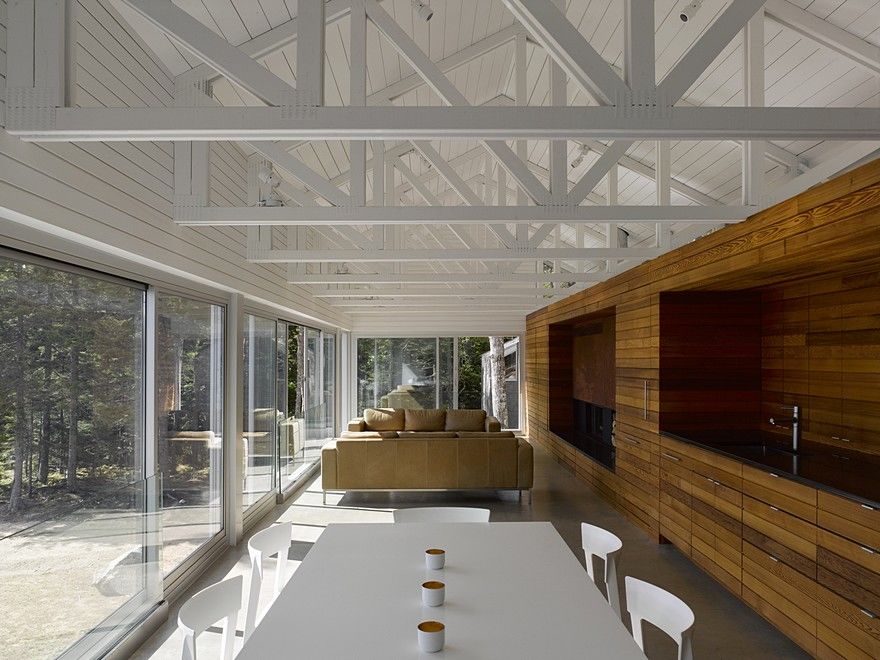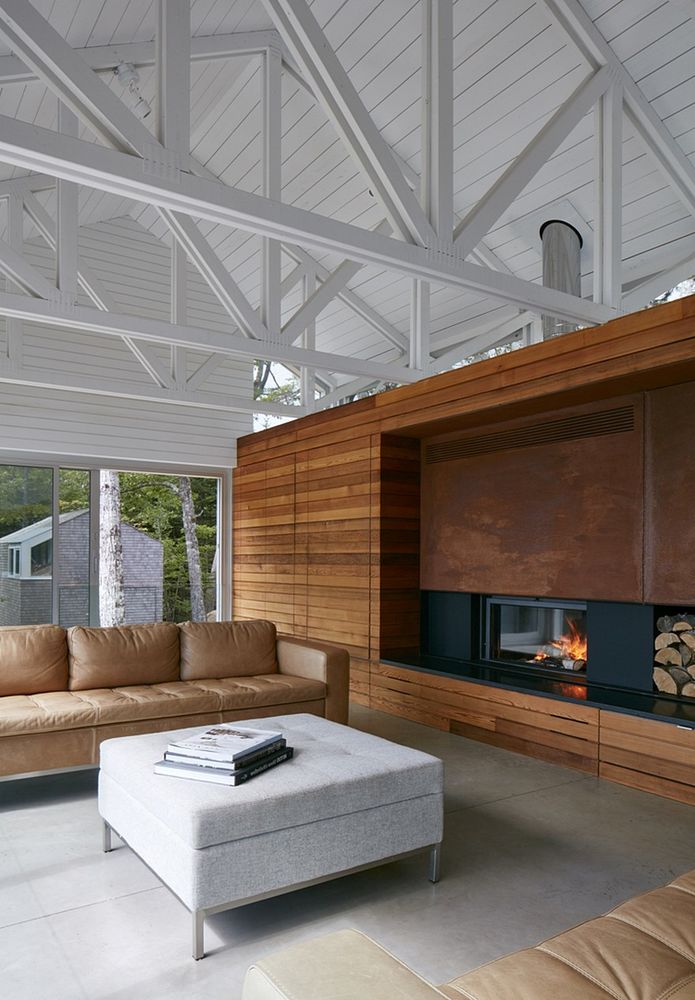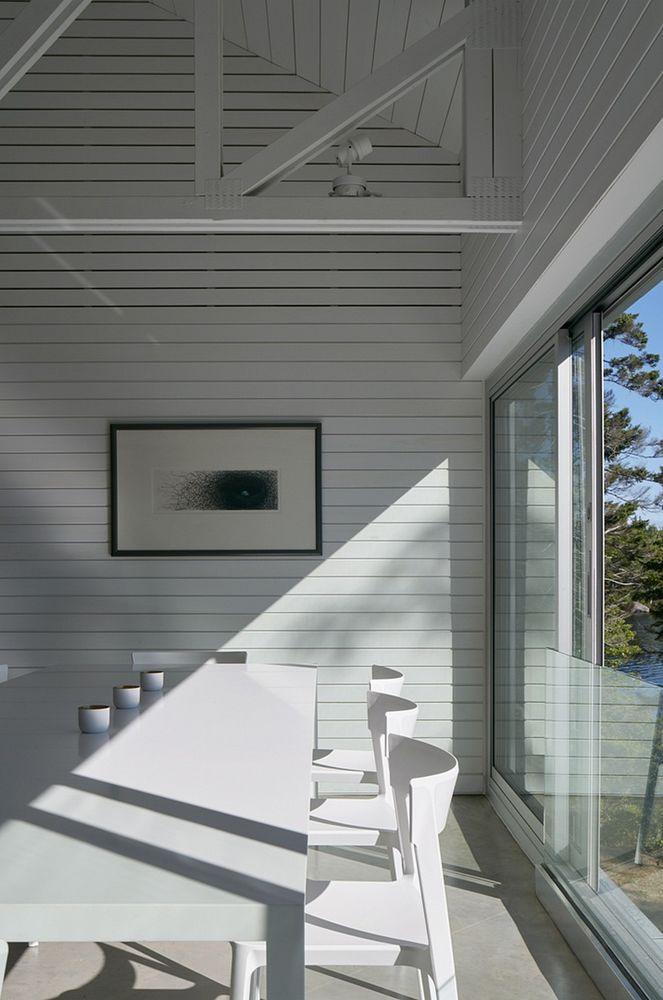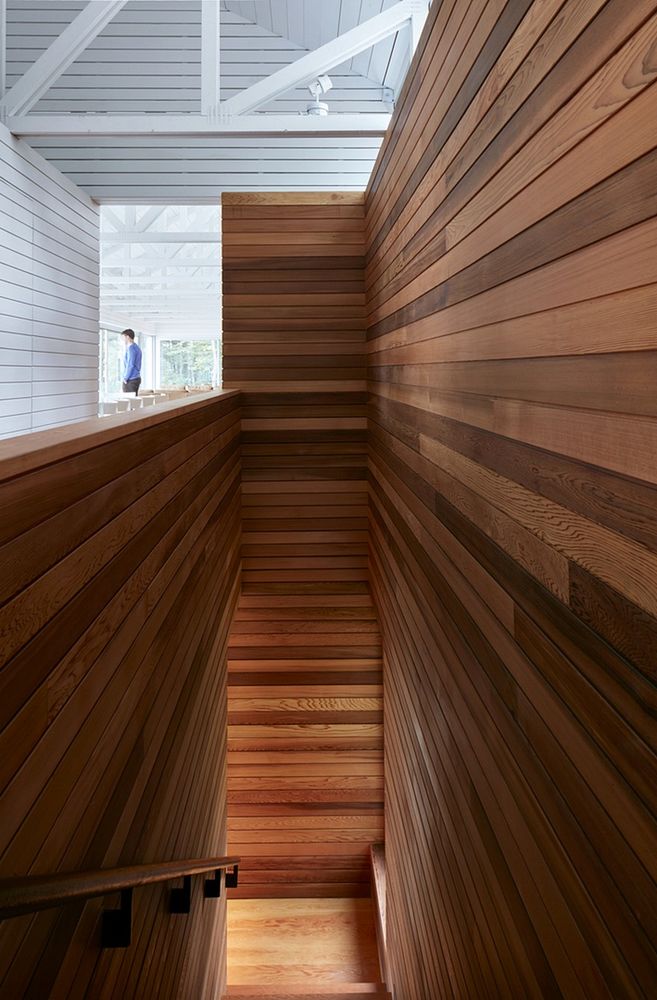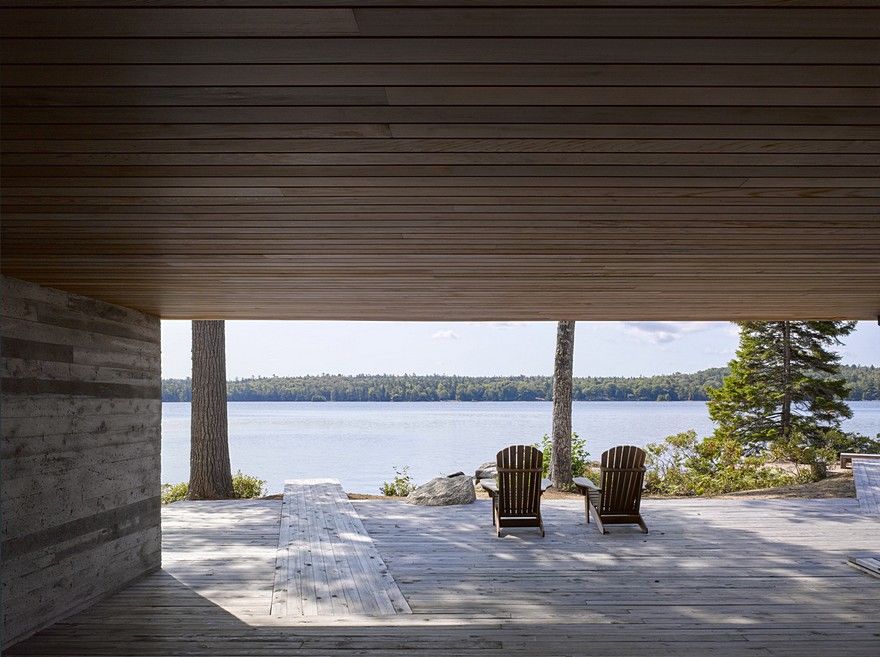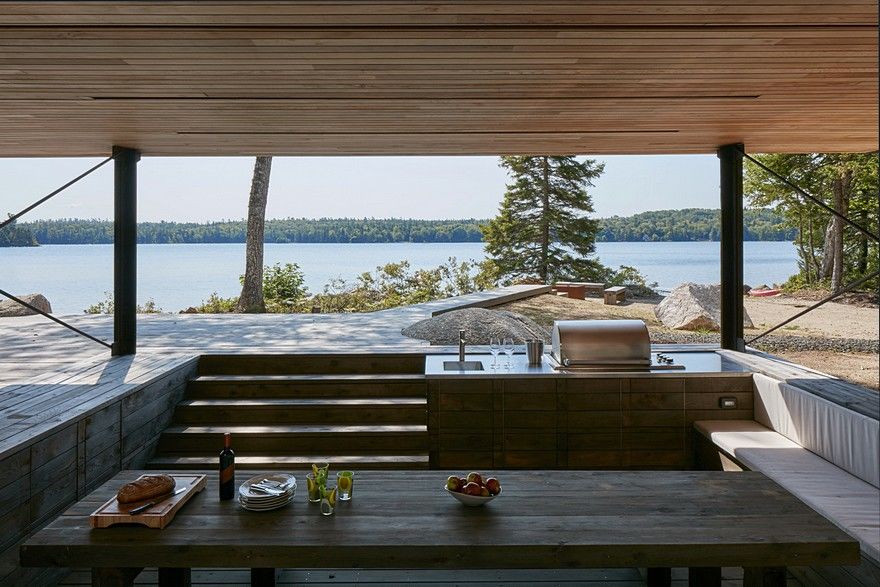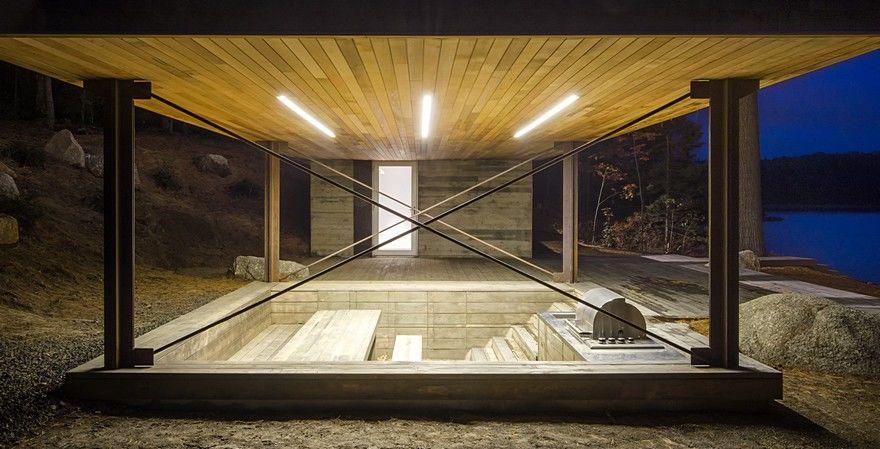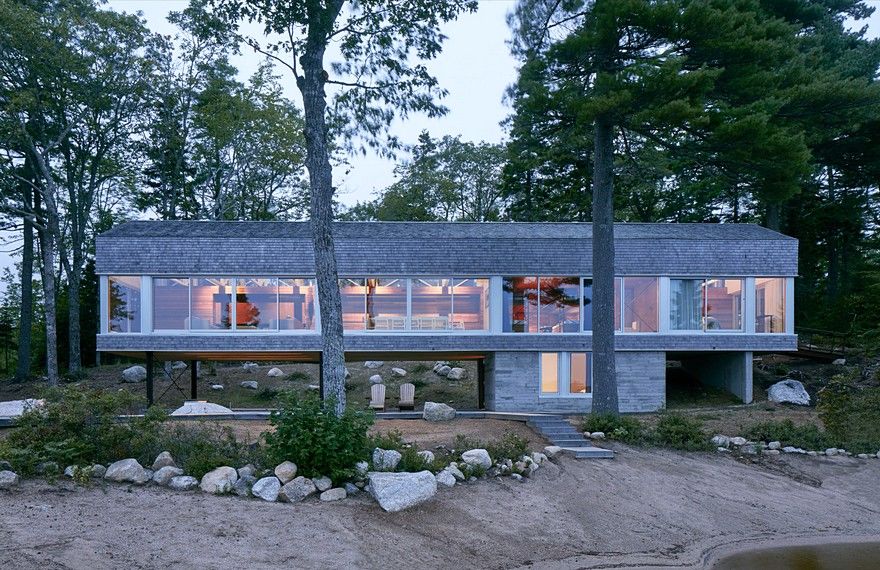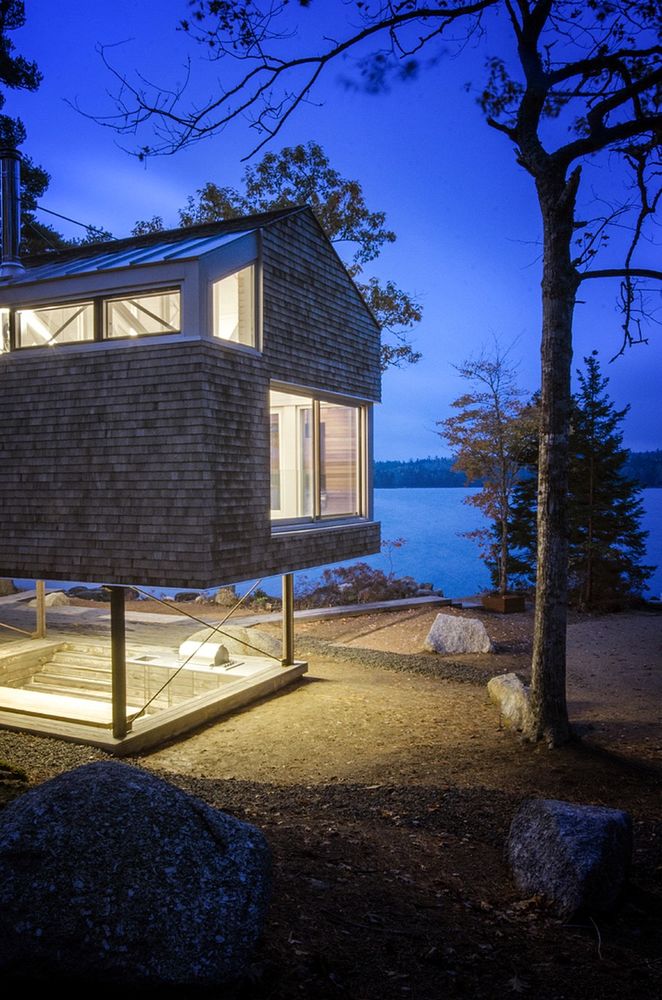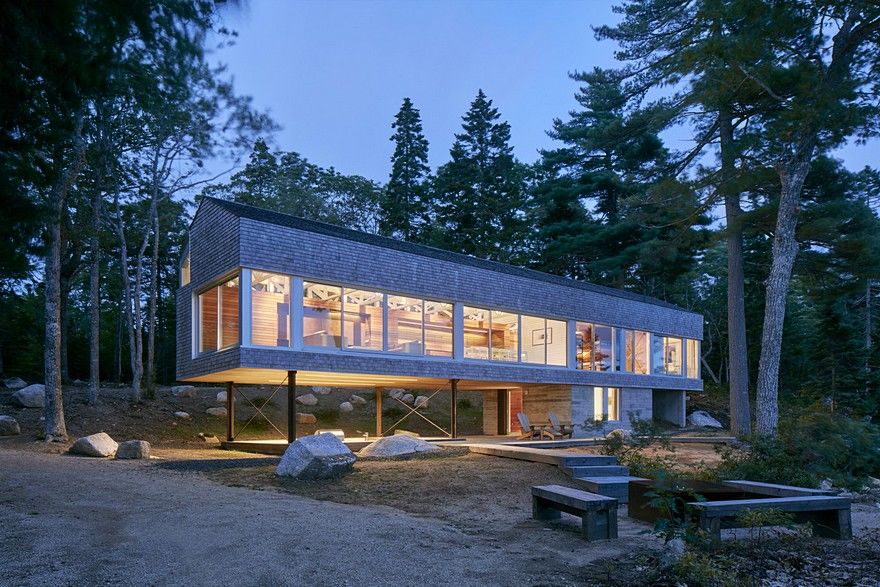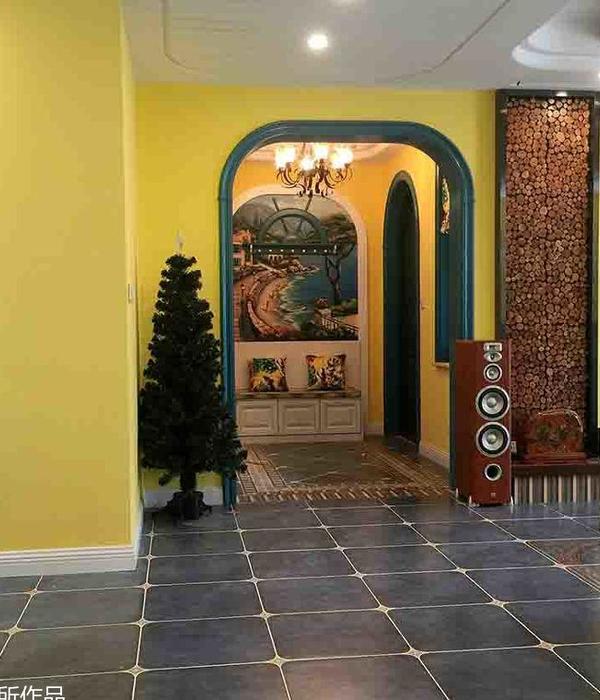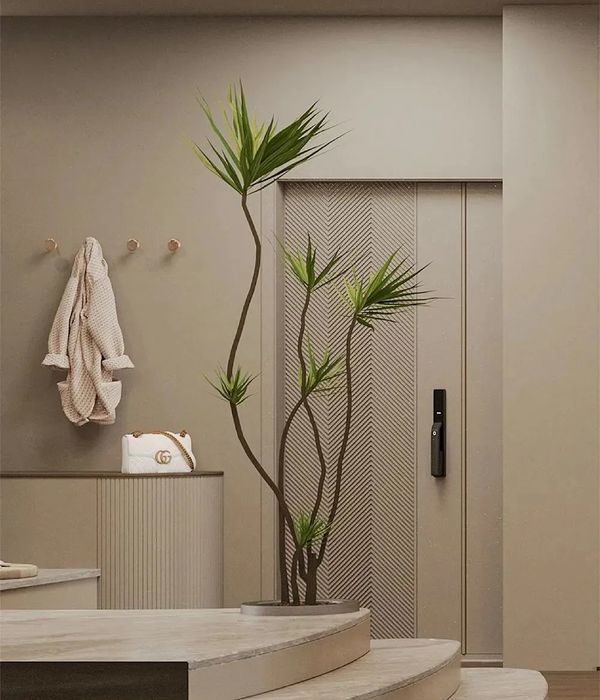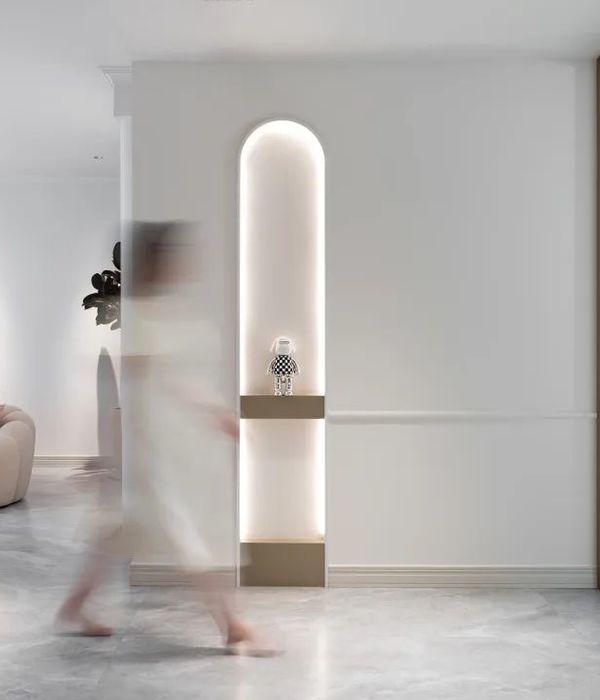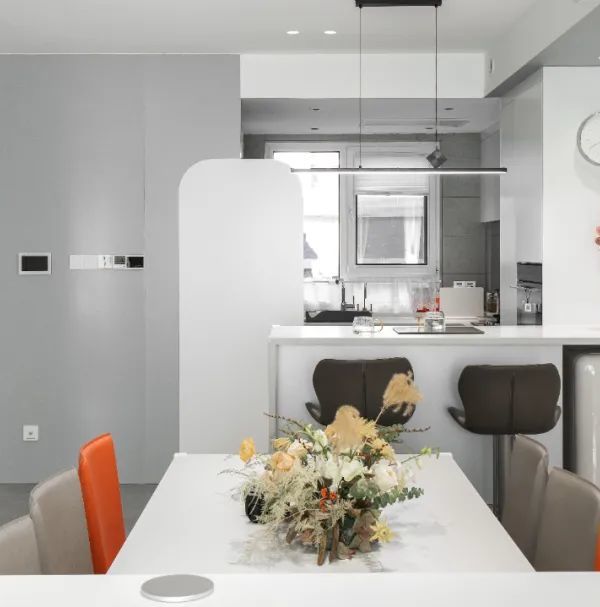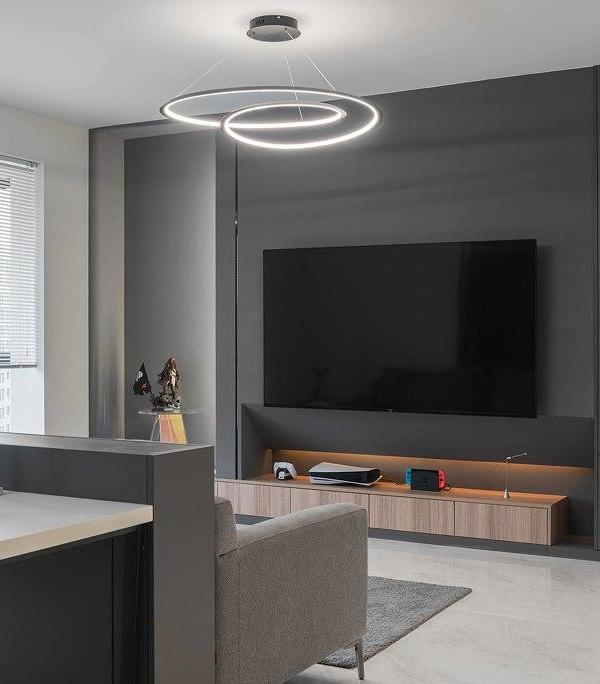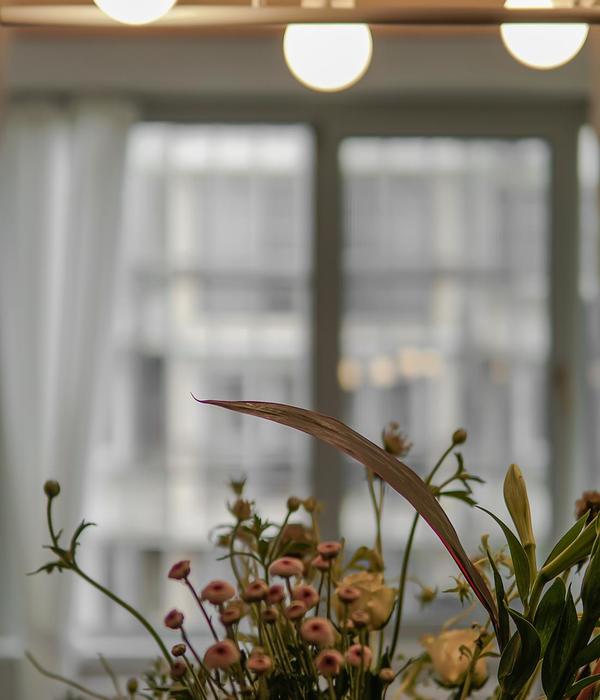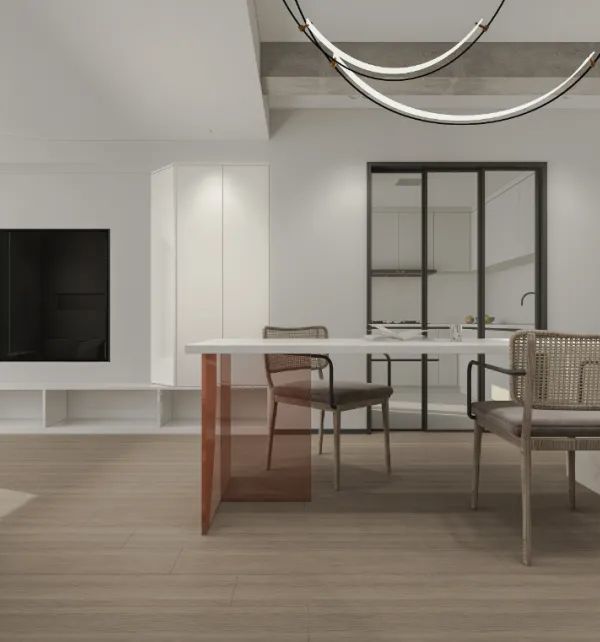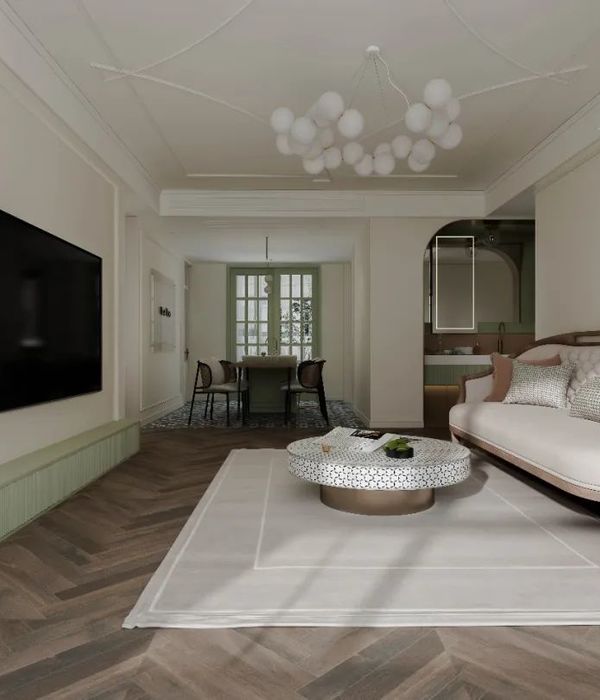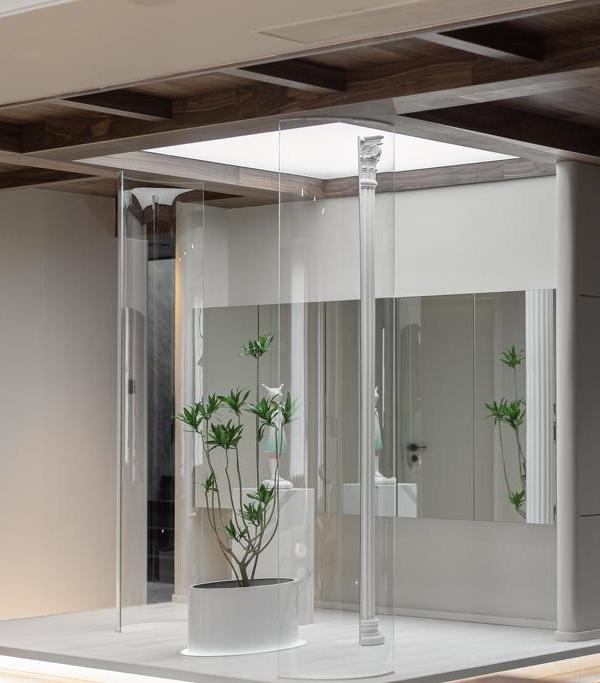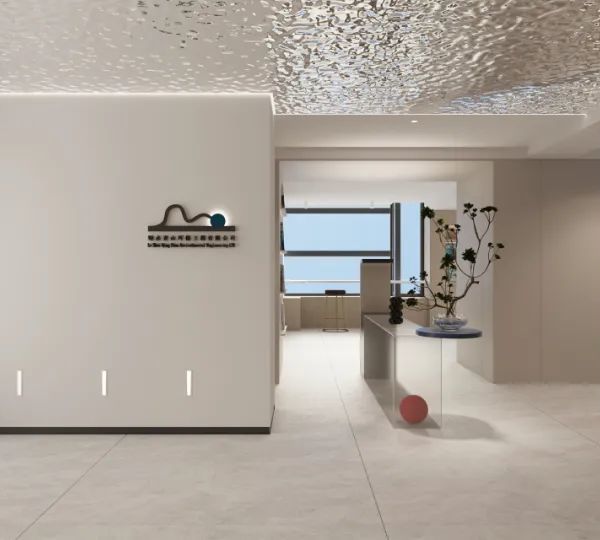新斯科舍湖边镜像点小屋,极简风格融入本土元素
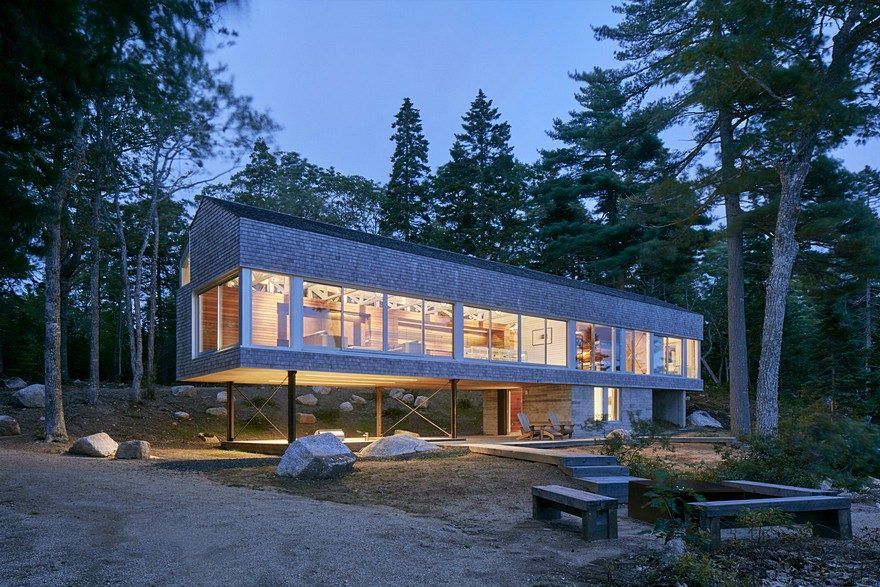
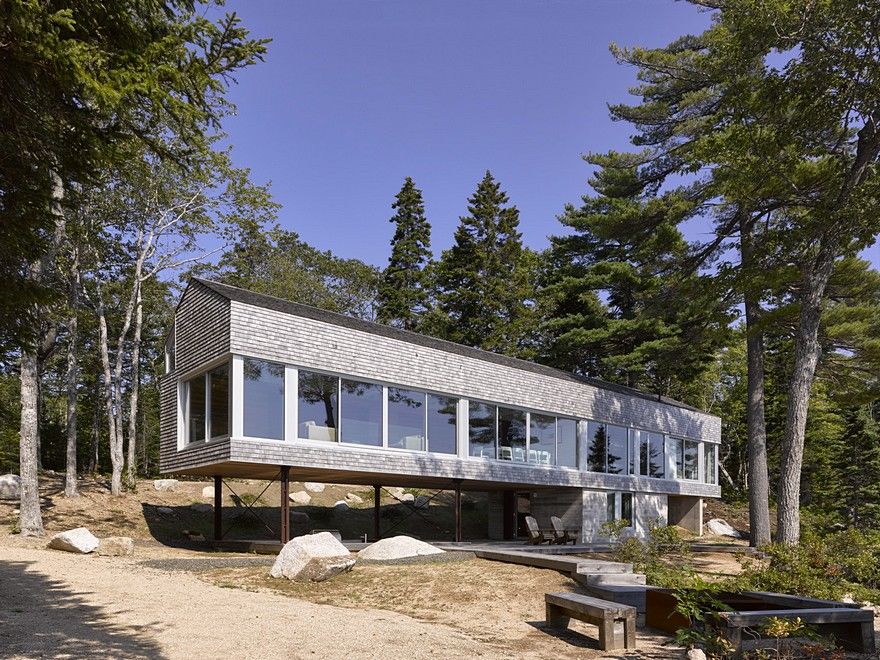
Mirror Point Cottage is a vacation home for a local fisherman’s daughter, her Dutch minimalist husband, and their two young children, on a lake near Annapolis Royal in Nova Scotia. Fishing is one of Nova Scotia’s oldest industries, demonstrated by the weathered fishing shacks lining its coast. The Mirror Point cottage demonstrates the frugality of the Nova Scotian vernacular in an elegant manner. It is formally expressed as an elevated 80-foot long extruded ‘fish shed’ supported by a steel aedicule and a board formed concrete entry core. Spatially, it is a long, south-facing screened porch elevated over the lake for prospect. The thick totemic north wall protects and insulates the interior from the public, north side. The hovering building forms a gate which frames the view to the lake on arrival to the site. The rusted steel aedicule contains a sunken outdoor summer kitchen, which offers a sheltered place at grade for the grandparents to watch the children playing on the beach. The garage/bunkie acts as a miniature version of the main house.
镜像点小屋是当地渔民的女儿荷兰极简主义丈夫和两个年幼的孩子在新斯科舍州安纳波利斯皇家湖边的度假之家。捕鱼是新斯科舍省历史最悠久的产业之一,沿海地区的老化渔房就证明了这一点。镜点别墅以优雅的方式展示了新斯科舍的节俭。它被正式表达为一个高架的80英尺长的挤压‘鱼棚’,由一个钢骨和一个板组成的混凝土进入核心支持。在空间上,它是一个长的,朝南的屏蔽门廊,高耸在湖面上,以备不时之需。厚厚的图腾北墙保护和隔离内部与公众,北面。这座悬停的建筑物形成了一扇门,当到达现场时,这扇门构成了通往湖面的框架。这个生锈的钢制厨房里有一个凹陷的室外夏季厨房,为祖父母在沙滩上观看孩子们玩耍提供了一个隐蔽的地方。车库/小床作为主房子的缩影。
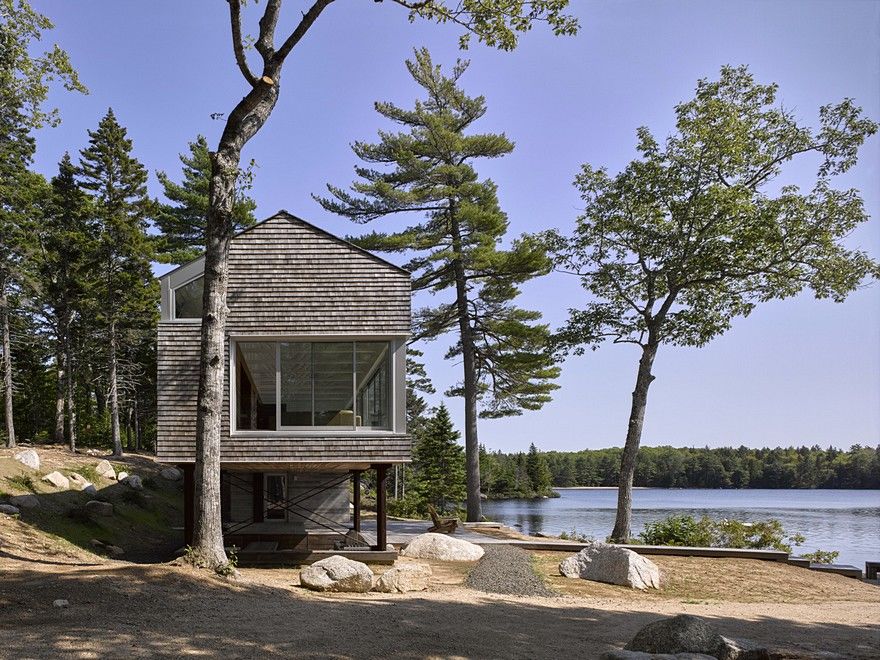
建筑物的位置正是利用现有的地形,最大限度地利用南方被动太阳能和对湖泊的看法,并尽量减少对现有硬木树木的清除。这座悬停的建筑物形成了一扇门,当到达现场时,它将看到湖面。
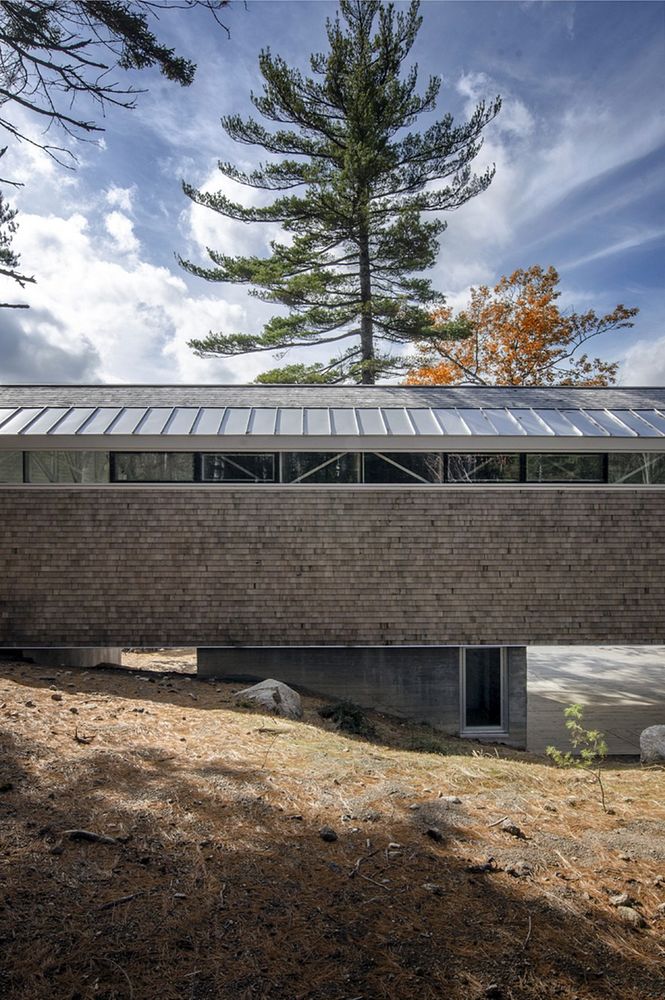
The southern façade is entirely operable with large sliding glass panels. When opened up, the façade allows for the elevated volume to act as a giant porch open to the environment and intimately connected to the lake shore. The thick totemic north wall protects and insulates the interior from the public, north side and continuous outsulation on walls and roof provides high R-value and minimizes thermal bridging. This passive solar dwelling has a high thermal mass concrete floor, and hydronic in floor heating.
南面是完全可以操作的大滑动玻璃面板。打开后,立面允许高架的空间充当一个向环境开放并与湖岸紧密相连的大门廊。厚厚的图腾北墙保护和隔离内部与公众,北侧和持续的输出在墙壁和屋顶提供高R值,并尽量减少热桥接。这种被动式太阳能住宅具有高热大体积混凝土地板,并在地板加热。
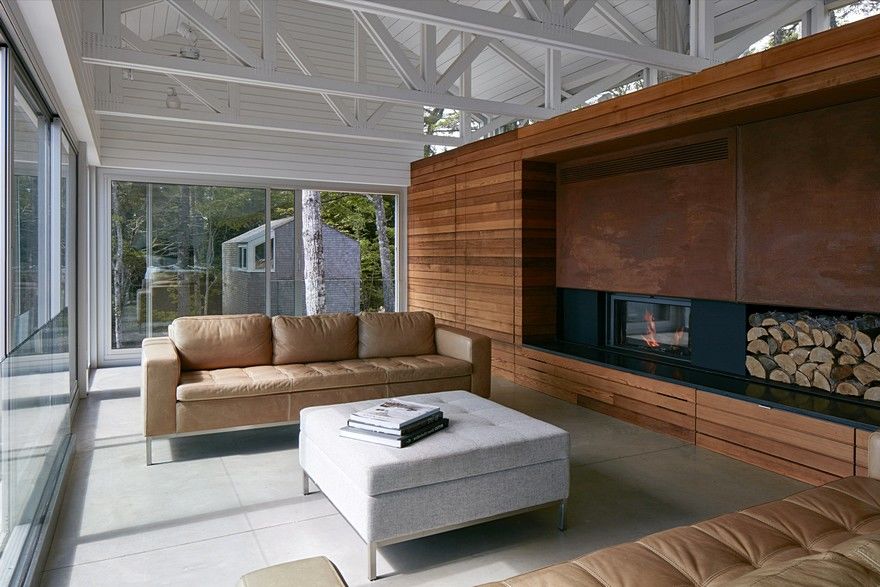
It is designed with a respect of traditional coastal language and employs a formal inventiveness with common local materials. Materially this is a ‘sweet and sour’ building, combining the highly crafted cedar millwork with banal economical gang nail trusses, which are common in contemporary North American House construction. These ‘gang-nail’ wood structural components were used extensively to reduce the amount of structural steel and cost. These ordinary materials, normally covered up, are celebrated in the living and dining space.
它是在尊重传统沿海语言的基础上设计的,采用了一种形式上的创造性,使用了通用的地方材料。从物质上讲,这是一座“甜而酸”的建筑,结合了精心制作的雪松磨坊和平庸的经济帮派钉架,这在当代北美房屋建筑中很常见。这些‘钢钉’木结构部件被广泛使用,以减少结构钢的数量和成本。这些普通的材料,通常被掩盖起来,在生活和用餐的空间里被庆祝。
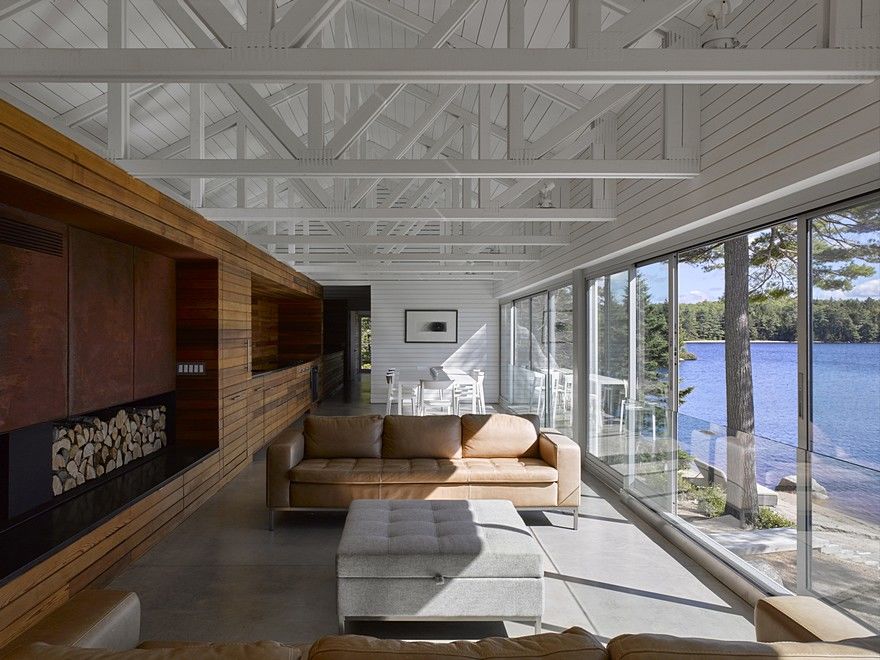
The exterior is clad in local eastern cedar shingles and a standing seam metal roof. With its inherent high level of environmental sustainability, its affordability, and its subtly refined aesthetic, our practice builds upon this understated, everyday language of construction, through projects like Mirror Point.
外部覆盖当地东部雪松板条和直立的接缝金属屋顶。由于其固有的高水平的环境可持续性、其承受能力和其微妙的精细化的美学,我们的实践基于这种轻描淡写的日常建筑语言,通过像MirrorPoint等项目。
Architects: MacKay-Lyons Sweetapple Architects Project: Mirror Point Cottage Location: Annapolis, Nova Scotia, Canada Area: 1,700 sq. feet Photography: James Brittain and William Green
建筑师:麦凯-里昂甜苹果建筑师项目:镜像点的平房位置:安纳波利斯,新斯科舍,加拿大地区:1,700平方米。双脚摄影:詹姆斯·布里廷和威廉·格林
